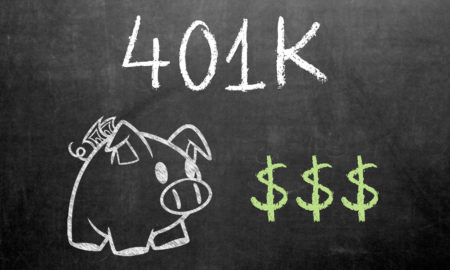

Tax loss harvesting used to be a money saving investment strategy reserved only for the super rich, but tax loss harvesting is now available for average investors who don’t have millions in investable assets. This form of tax efficient investing offers an opportunity to save big on capital gains taxes.
Robo-advisors like Betterment offer an opportunity to save on taxes through automated, tax efficient investing strategies that take advantage of tax loss harvesting.
What is tax loss harvesting?
Tax loss harvesting is a semi-active investment technique used to lower your capital gains taxes by strategically selling and buying investments timed to take advantage of capital losses to offset capital gains.
That’s a lot going on! So let’s take a look at an example to better understand how tax loss harvesting works.
Over time, your investments rise and fall in value. While we always want our investments to go up, in reality performance is typically mixed. Let’s say your S&P 500 fund is doing really well, but your emerging markets fund has performed poorly. The S&P 500 investment is up $5,000 and the emerging markets investment fell by $1,000. If you were to sell both today, you would have a $4,000 capital gain, because the emerging market loss offset your S&P 500 gain.
But what if you are not ready to sell your investments just yet? If you just sit on those investments for the long-term, you may end up seeing both your S&P 500 investment and your emerging market investment rise. This is great for your bottom line, but gives up the opportunity to lower your taxes by taking advantage of the $1,000 capital loss from the emerging markets investment.
With tax loss harvesting, you can strategically sell an investment to lock in a capital loss, then rebuy the investment and use those losses to offset capital gains. Your robo-advisor may sell the emerging markets fund and buy a new one at a similar value to lock in a $1,000 loss in this tax year. This can offset dividends and other investment profits lowering your current year tax bill.
Thanks to the time value of money and your long-term portfolio goals, it is better to take the loss and lower your taxes now than it is to do so later.
What changed that gives lower net worth investors access to tax advantaged investments?
Tax loss harvesting used to be a slow, manual process. Brokerage firms would help high net worth investors with their tax loss harvesting trades and strategy, but due to the time involved, it didn’t make sense for the big investment firms to offer the service to clients with a smaller portfolio.
During the past few years, the rise of robo-advisors has brought improved, automated investing to the masses. One of the largest robo-advisors is Betterment, a pioneer in the industry. Using their tax loss harvesting algorithms, a robo-advisor like Betterment removes the expertise and cost required to take advantage of tax loss harvesting, allowing Betterment to offer tax loss harvesting to every Betterment client – regardless of portfolio size.
Because tax loss harvesting is no longer a manual effort, any investor can take advantage of tax loss harvesting to save money and improve their long-term investment results.
Tax Loss Harvesting FAQs:
What is a tax loss sale?
A tax loss sale is the sale of an investment to capture an investment loss for tax purposes. In the case of a tax loss sale, an investment is sold and a new investment is purchased to replace the investment in that particular asset class shortly after.
This lowers current year taxes as the investment loss is recognized and can offset capital gains.
Can you use short term losses to offset long term gains?
Short-term capital gains apply to investments held less than one year and long-term capital gains apply to investments held longer than one year. The short-term capital gains tax rate is higher than the long-term rate.
Tax losses are first applied to offset gains of the same class (e.g. long-term losses offset long-term gains first), and then excess losses can be applied to the other class of gains. The excess carried over to the other class of gains is capped at $3,000 per year.
What is the meaning of tax gain?
A tax gain is a taxable gain on an investment. Tax gains apply to capital gains you earn from stocks, bonds, and other investments. Tax gains can be offset by tax losses through regular investment activity or tax loss harvesting.
Can you use capital loss to offset dividend income?
Capital losses can offset up to $3,000 of regular income each year after other investment gains and losses are taken into account. This includes income from dividends.
How important is tax loss harvesting?
Tax loss harvesting is not a requirement for any portfolio or investor. However, it can easily save you many thousands of dollars when properly implemented over a period of time. Larger portfolios will see a bigger benefit than smaller portfolios, but any investor can benefit from tax loss harvesting.
Are there any downsides to tax loss harvesting?
Depending on your brokerage, tax loss harvesting trades may incur a trade fee of around $10 per trade. Each tax loss harvest trade, in that case, may count as two trades costing $20. Too many trades in this case can become expensive, so make sure your brokerage does not charge for tax loss harvesting trades before signing up.
Further, the complexities of different capital gains tax rates can lead to errors or additional tax preparation cost. However, working with a reputable brokerage and tax professional can help alleviate these issues.
Photo credit: InvestmentZen via Flickr – Creative Commons Attribution License




















3 Comments